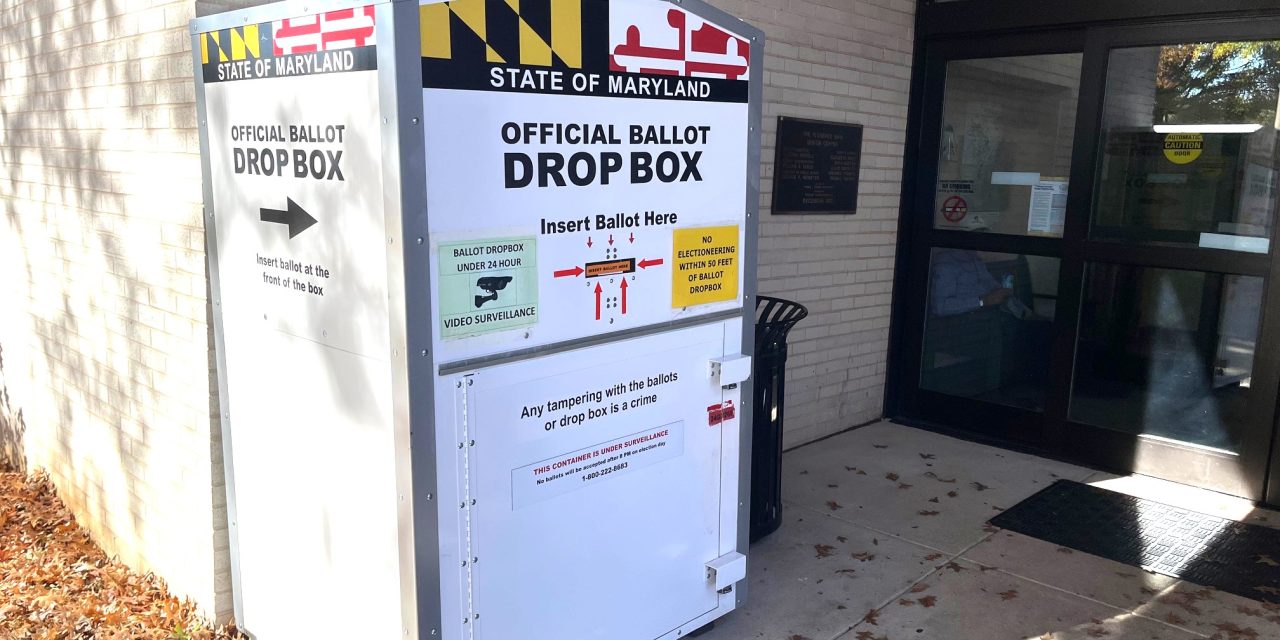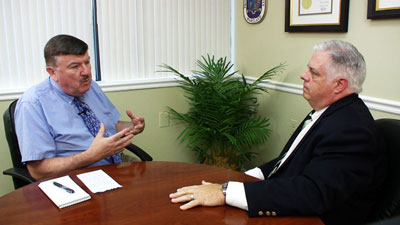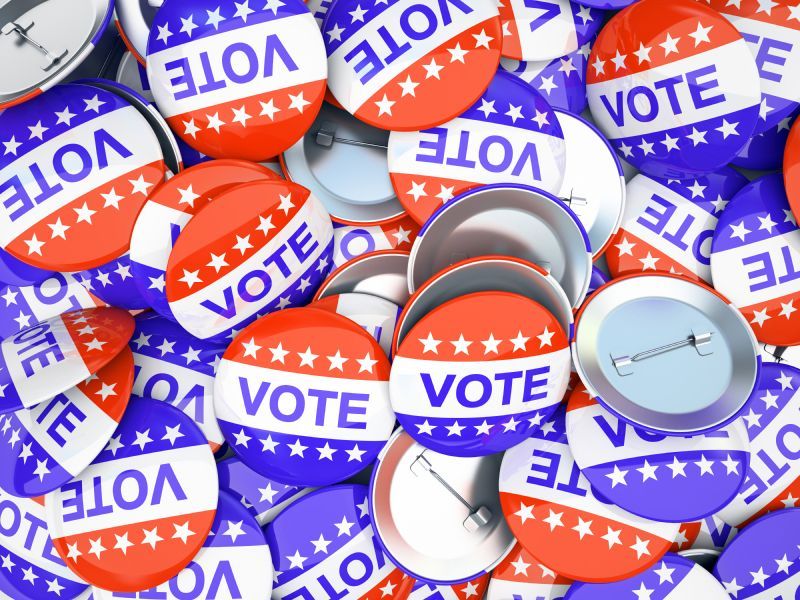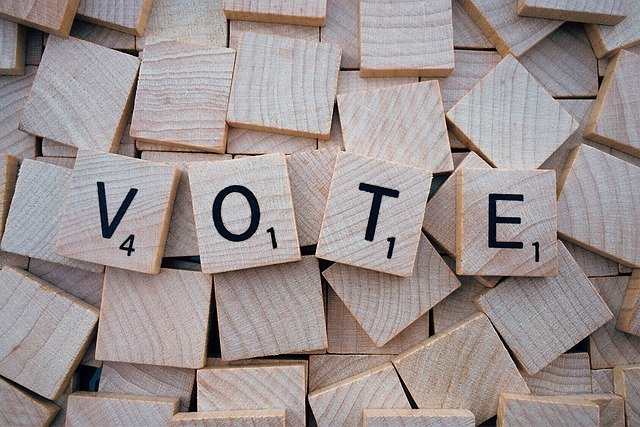By: TAYLOR NICHOLS, DARANEE BALACHANDAR and CALEY FOX SHANNON
Early voting came to an end Thursday night after a busy week where nearly a million Marylanders turned out to cast their ballots.
About 23 percent of eligible voters in Maryland have already voted in the lead-up to Election Day, a Capital News Service analysis of unofficial early voting data from the State Board of Elections found.
Maryland saw a 14 percent increase in early voter turnout this year compared to 2016, according to the CNS analysis.
“I know I didn’t vote early in 2016. So I don’t know if it was a newer experience, or I feel like more people are aware of it now and are using the service more than in 2016. Maybe even 2020,” Joe Limarzi, a resident of Hyattsville, said as he left the College Park Community Center Wednesday evening.
Just over 987,000 Marylanders voted early in 2020, compared to about 875,000 in 2016. While the 2020 election was an outlier in many respects while the nation grappled with the COVID-19 pandemic, the increase in early voting may be here to stay as nearly 1 million early votes were cast in 2024. CNS compared this year’s early voting data to 2016 for this analysis.
Who is voting early? A look at the data
Democrat women are leading in early voting by a wide margin — nearly 130,000 more Democrat women voted early than Democrat men, the second-largest group.
More Democrats voted early than Republicans, as they did in the past two presidential elections, unsurprising in a blue state like Maryland.
However, Republicans demonstrated enthusiasm about voting early this election, making up nearly 10 percent more of early voters than in 2016. Democrat voters lagged by about 11 percent compared to turnout in 2016.
“The Republicans have traditionally emphasized voting in person on Election Day,” Amie Hoeber, Secretary of the Montgomery County Board of Elections, told CNS in a phone call Friday. “And realizing that this created a disadvantage for them, you know, people got sick, people got delayed, the weather was bad, stuff like that. This year, for the first time, the official Republican position was ‘vote early.’”
The largest age groups who voted early this year were people ages 45 to 64 and 65 and older, matching voting trends by age group for 2016. However, adults ages 65 and up made up a larger share of early voters this year, with both older men and women showing up to the polls at slightly higher rates than they did in 2016.
Republicans in Queen Anne’s have the highest voter turnout at 3,200 voters per 10,000 adults voting early.
The most populous counties like Prince George’s, Montgomery and Baltimore County – as well as Baltimore City – are leading in the most votes cast early. However, Queen Anne’s, Talbot, Calvert, Harford and St. Mary’s Counties are voting early at a higher rate per capita than other counties.
What impacts early voter turnout?
While it’s tempting to speculate what early voting could mean for election results, in a Slack exchange with CNS reporters, political science professor Paul Gronke at Reed College cautioned against guesswork because many factors impact who turns out early.
Political data analysts Marc Meredith and Joelle Gross of NBC’s News Exit Poll Desk point to historical data that shows young people, for example, are far more likely to vote on Election Day.
“People who are highly motivated to vote and know who they want to vote for seem to cast their ballots earlier, and people who are less motivated or are not sure who they want to vote for wait until Election Day,” Alysoun McLaughlin, Senior Fellow at the Center for Democracy and Civic Engagement told CNS in an email Wednesday.
McLaughlin previously served as an election official in Montgomery County, where early voter turnout varied widely from election to election, making it difficult to pick out trends, she said.
Variables like changes to voting laws and how much election officials or specific campaigns encourage turnout can impact who makes it to the polls ahead of time, Gronke said.
Ongoing efforts at the state level have expanded access to early voting over the last decade or so. That was in part in response to long lines at early voting sites in the 2012 and 2016 elections, McLaughlin said.
Most recently, state legislation passed in 2021 expanded the number of early voting centers and the hours for early voting.
Maryland officials added 12 new voting centers after the 2016 election and another 15 since 2020, bringing the total number to 96 centers across the state.
More than half of the counties in Maryland have added early voting locations since 2016, with the biggest increases in Anne Arundel and Montgomery counties, where four and five new centers were added, respectively.
To run early voting centers and staff up for Election Day, local boards of elections recruited a small army of election judges statewide. After a week of working the polls from 7 a.m. to 8 p.m., they have a brief respite before Tuesday.
“Some of them actually worked the whole time of early voting, 16 hours a day, and that’s utterly exhausting,” Hoeber said of the Montgomery County election judges. “Some of them worked only half a day because we now offer half-day shifts, but, but that’s eight hours a day which most people consider quite full-time. And so I hope they’re all going home getting some rest between now and Tuesday.”
Inside the College Park Community Center, lines of residents waited to cast their votes Wednesday evening, a day before early voting ended. People leaving the center stood outside, taking selfies with friends and family. One parent stuck “I voted” stickers on her young daughters’ shirts.
Prince George’s County resident Mispa Omojuwa smiled as she held her sticker up to the camera. She had just cast her vote in her first election since gaining American citizenship.
Omojuwa, 47, has lived in Greenbelt for around three years and is from Cameroon.
“I couldn’t just wait to vote because it’s my first time,” she said.







Recent Comments